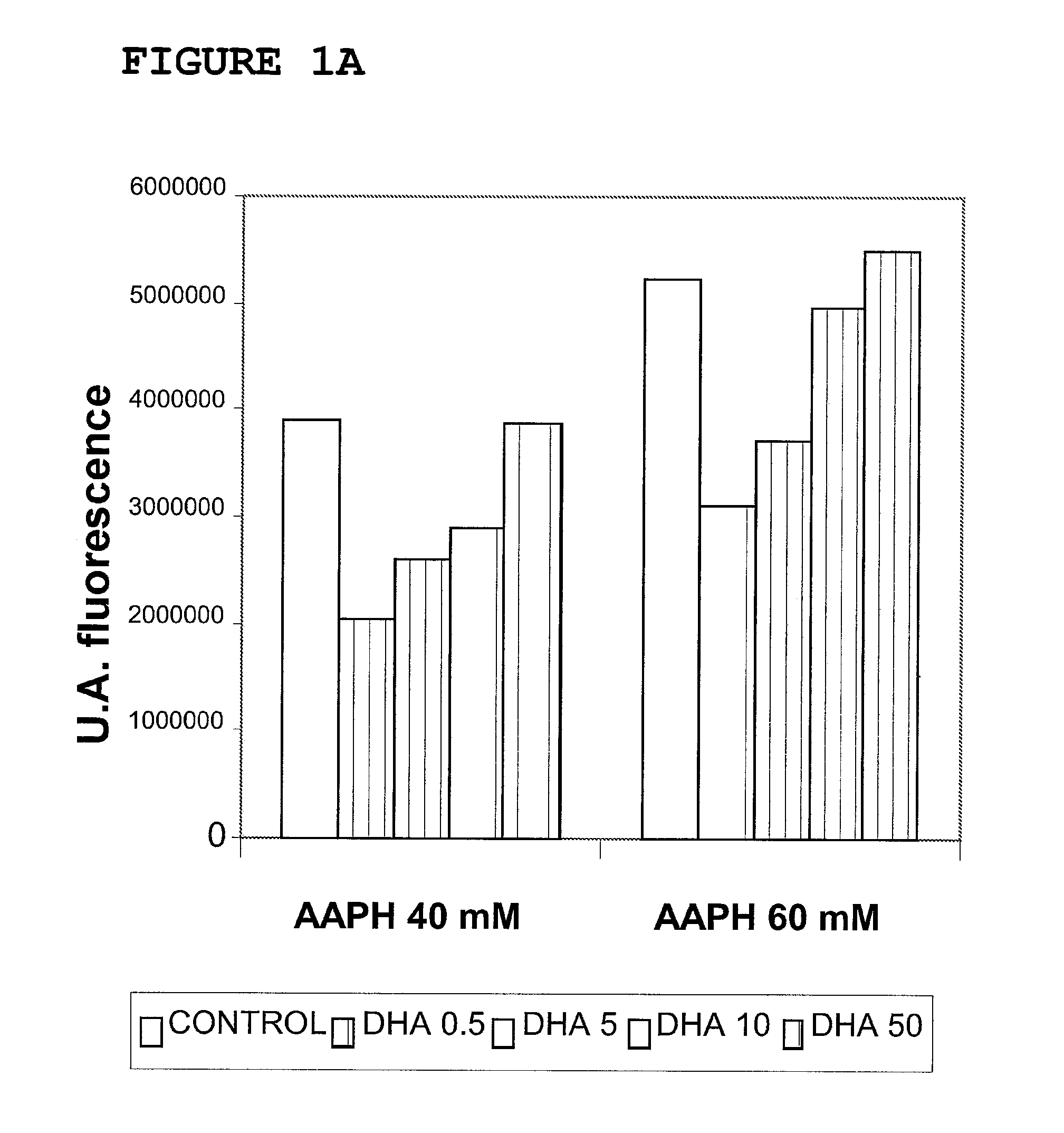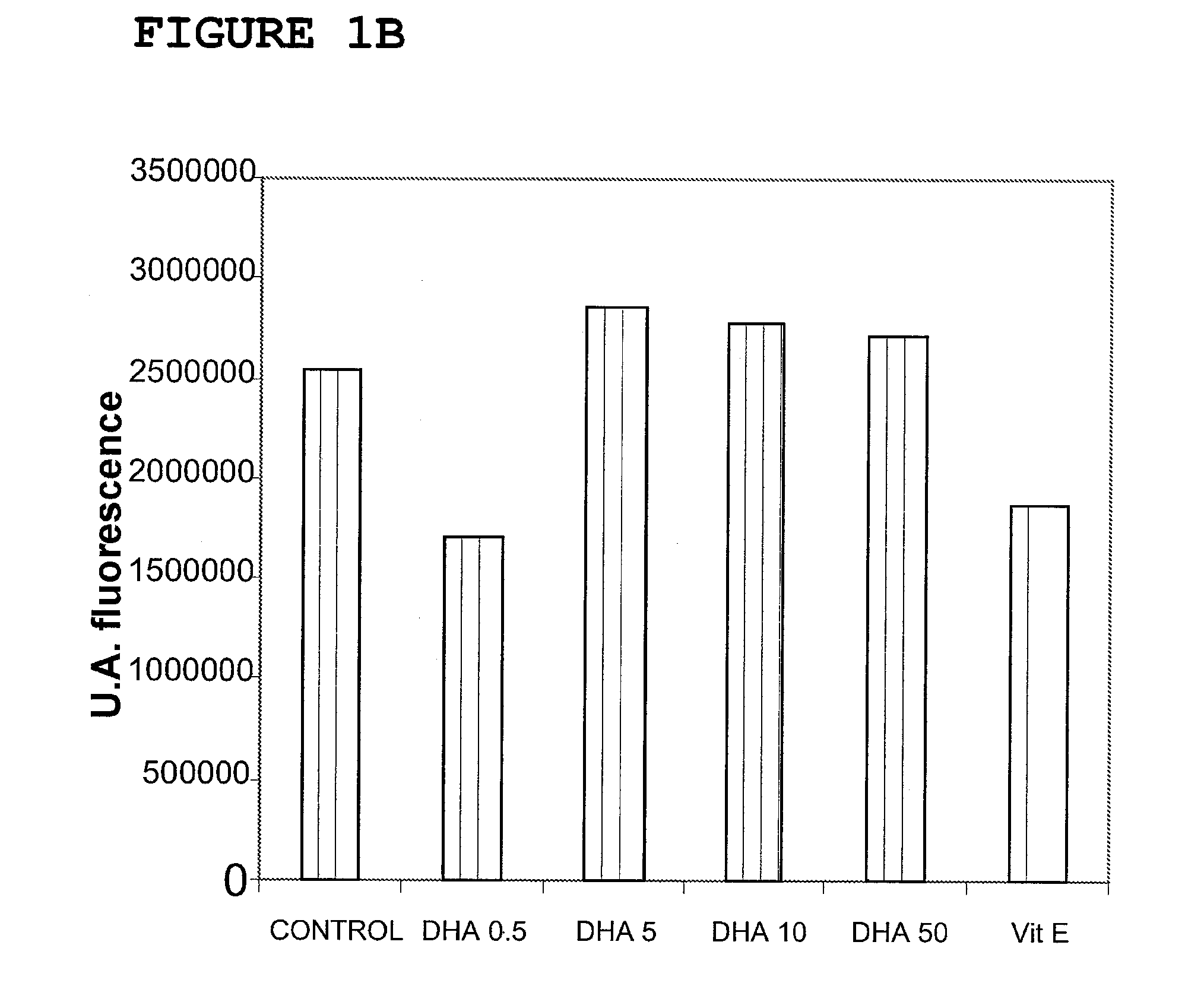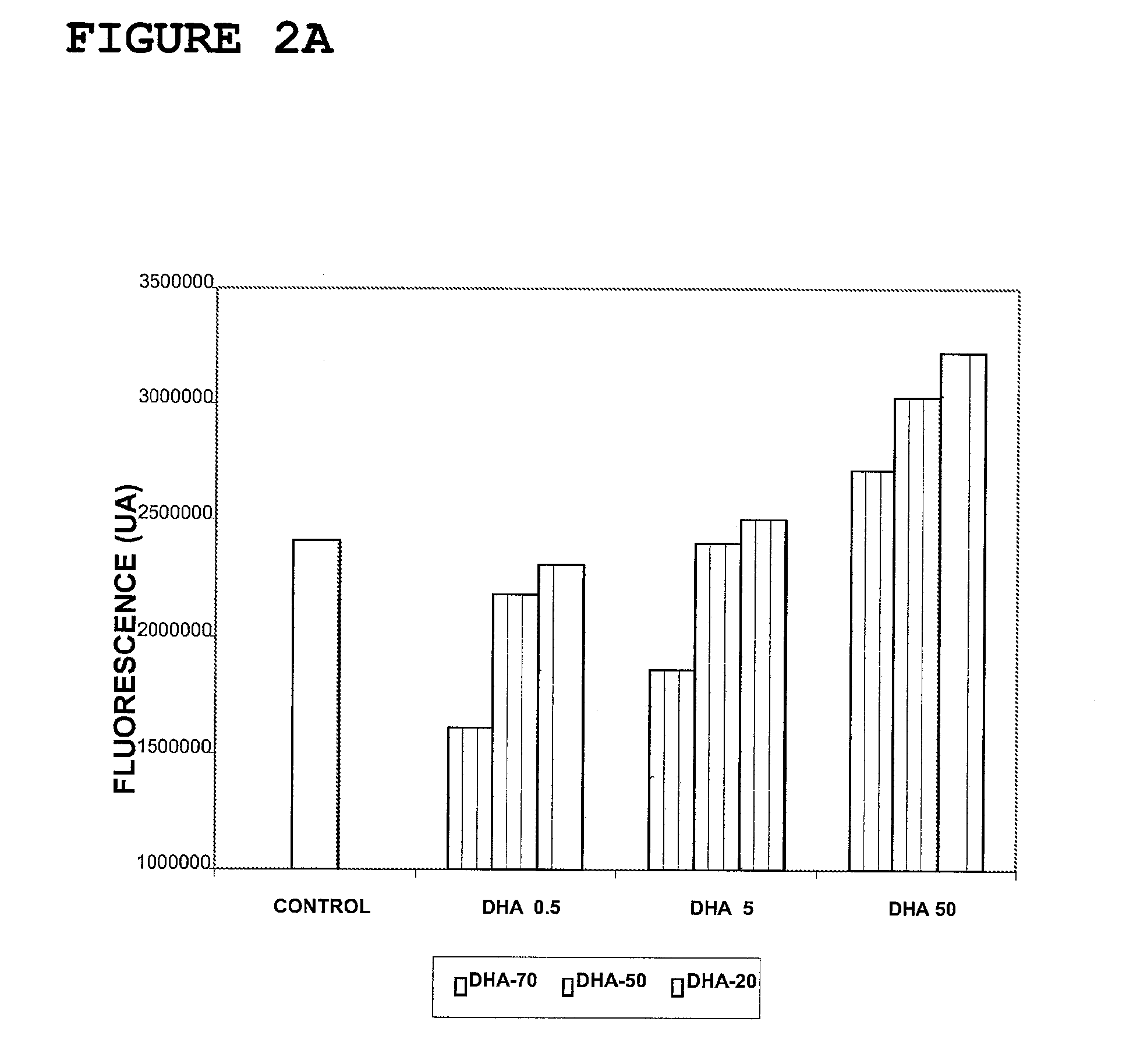Use of dha, epa or dha-derived epa for treating a pathology associated with cellular oxidative damage
a technology of cellular oxidative damage and epa, which is applied in the direction of anti-noxious agents, drug compositions, biocides, etc., can solve the problems of deterioration of eyesight, significant risk factor of ros production and breakdown, and cell death
- Summary
- Abstract
- Description
- Claims
- Application Information
AI Technical Summary
Benefits of technology
Problems solved by technology
Method used
Image
Examples
examples
Materials and Methods for Evaluating Antioxidant Activity
Cell Cultures
[0143]The cellular models used were Foreskin cells (undifferentiated epidermal fibroblasts, CRL-2076) and ARPE-19 cells (retina pigmentary epithelial cells, CRL-2302) obtained from the American Type Culture Collection. The cell cultures were kept in suitable growth conditions of temperature (37° C.), CO2 concentration (5%) and humidity (95%) in an incubator specially designed for this purpose. The ARPE-19 cells were maintained in growth up to confluence of 0.3×104 cells / cm2 in culture flasks with DMEM-F12 medium (Biological Industries) supplemented with 10% bovine foetal serum, penicillin antibiotics (100 U / mL), streptomycin (100 μg / mL) and glutamine (Biological Industries). The CRL-2076 fibroblasts were kept growing in culture flasks in Iscove's modified Dulbecco's medium (Biological Industries) supplemented with 10% bovine foetal serum, penicillin antibiotics (100 U / mL), streptomycin (100 μg / mL) and glutamine (B...
PUM
| Property | Measurement | Unit |
|---|---|---|
| temperature | aaaaa | aaaaa |
| weight | aaaaa | aaaaa |
| weight | aaaaa | aaaaa |
Abstract
Description
Claims
Application Information
 Login to View More
Login to View More - R&D
- Intellectual Property
- Life Sciences
- Materials
- Tech Scout
- Unparalleled Data Quality
- Higher Quality Content
- 60% Fewer Hallucinations
Browse by: Latest US Patents, China's latest patents, Technical Efficacy Thesaurus, Application Domain, Technology Topic, Popular Technical Reports.
© 2025 PatSnap. All rights reserved.Legal|Privacy policy|Modern Slavery Act Transparency Statement|Sitemap|About US| Contact US: help@patsnap.com



